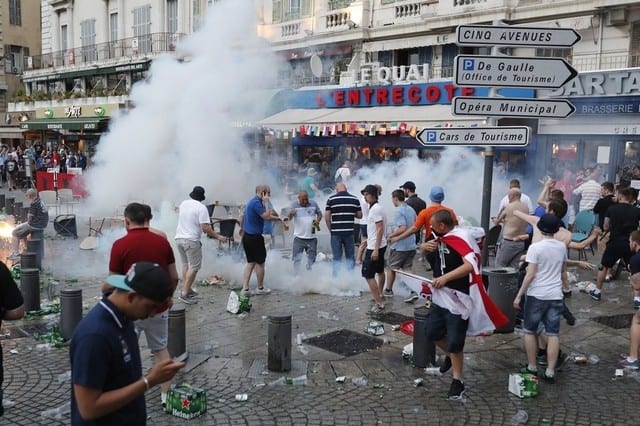Violence has historically been an issue in the world of football. Attempts to bring football hooligans in line date back to 1314 when King Edward II banned the game, citing fears that the violence, which had become associated with the game, would result in wider social unrest.
Although a lot has changed in the 700 years since this royal ban, anti-social behaviour continues to taint the enjoyment of ‘the beautiful game’.
The UEFA European Championship is an event in which the top football teams from across Europe compete for the Henri Delaunay Trophy. Twenty-four teams are currently competing in this year’s host country, France.
The opening weekend of Euro 2016 was marred when violence erupted between Russia and England fans on the streets of Marseille, leaving 35 injured. Witnesses described the ‘military organisation’ of the Russian fans, some of whom were disguised in England shirts and armed with telescopic truncheons and gum shields.
The majority of the violence took place outside of the stadium, with riot police resorting to using tear gas to disperse the crowd and put an end to the fighting. By Monday, 43 Russia supporters were taken into custody, and 5 England fans were given jail sentences in addition to a two-year ban from France. Following the weekend of violence, Marseille prosecutor Brice Robin said that around 150 of the 12,000 Russian fans in the city were true hooligans who were ‘trained to fight’, and came to Marseille well-prepared and ready for the attack.
Roy Hodgson, the England manager, and England captain Wayne Rooney condemned the attacks in Marseille, urging England supporters to act in a ‘positive and respectful way’ and not to react to provocation.
Online reaction to the violence in Marseille has been extremely negative, resulting in an Adorescore of -86, as many people went online to vent about the actions of the fans in Marseille. Large amounts of high activation negative emotions such as grief, loathing and rage were frequently expressed on Twitter in relation to the anti-social behaviour.
On Tuesday UEFA made the decision to fine the Russian team €150,000 (~$170,000), and issue a suspended disqualification, meaning that Russia will be eliminated from Euro 2016 if there is further fan violence within the stadiums.
These measures proved to be an ineffective deterrent – as England and Russia fans moved on to Lille for Wednesday’s big matches, so too did the attacks. In the wake of Russia’s loss to Slovakia, England and Wales fans, who had been spending the day drinking outside the bars of Lille, began to use chants like ‘Russia’s going home’, pointing at the Russia fans in the street. As the chants became more and more anti-Russia, tensions rose, culminating in Russians charging at the English and Welsh fans, with some mounting a parked car. Riot police again used tear gas to control the crowd.
Twitter users expressed largely the same emotions and sentiment about the Lille hooliganism as they did the Marseille attacks, with high levels of loathing, grief and rage, and mentions of the attacks produced an Adorescore of -82, 4 points higher than mentions of the violence in Marseille.
While it remains to be seen if this violent streak will continue for the duration of Euro 2016, these events suggest that the football hooliganism which plagued the sport over 700 years ago is still going strong today.




